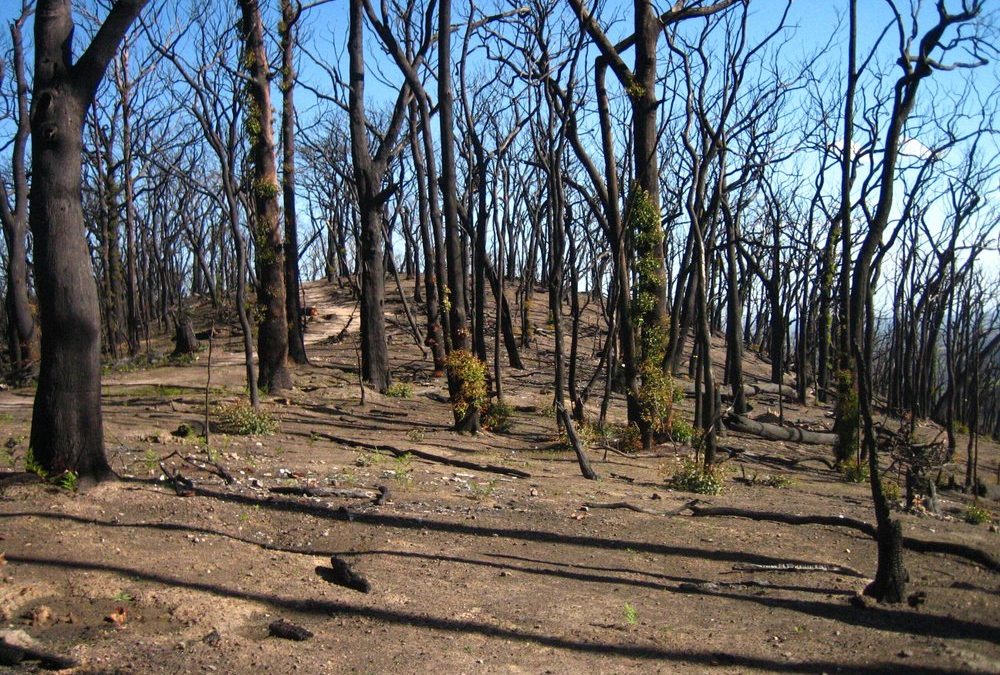SOURCE: AP
DATE: January 19, 2020
SNIP: Heat waves and drought have fueled bigger and more frequent fires in parts of Australia, so far this season torching some 40,000 square miles (104,000 square kilometers), an area about as big as Ohio.
With blazes still raging in the country’s southeast, government officials are drawing up plans to reseed burned areas to speed up forest recovery that could otherwise take decades or even centuries.
But some scientists and forestry experts doubt that reseeding and other intervention efforts can match the scope of the destruction. The fires since September have killed 28 people and burned more than 2,600 houses.
Before the recent wildfires, ecologists divided up Australia’s native vegetation into two categories: fire-adapted landscapes that burn periodically, and those that don’t burn. In the recent fires, that distinction lost meaning — even rainforests and peat swamps caught fire, likely changing them forever.
Flames have blazed through jungles dried out by drought, such as Eungella National Park, where shrouds of mist have been replaced by smoke.
“Anybody would have said these forests don’t burn, that there’s not enough material and they are wet. Well they did,” said forest restoration expert Sebastian Pfautsch, a research fellow at Western Sydney University.
“I’m expecting major areas of (tree) loss this year, mainly because we will not have sufficient seed to sow them,” said Owen Bassett of Forest Solutions, a private company that works with government agencies to re-seed forests by helicopter following fires.
In both Australia and western North America, climate experts say, fires will continue burning with increased frequency as warming temperatures and drier weather transform ecosystems around the globe.
The catastrophic scale of blazes in so many places offers the “clearest signal yet” that climate change is driving fire activity, said Leroy Westerling, a fire science professor at the University of Alberta.

